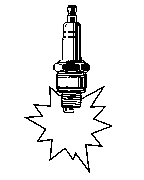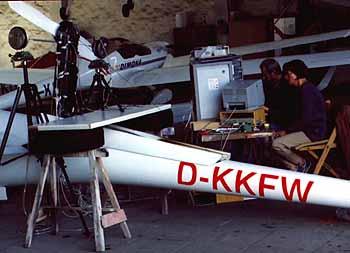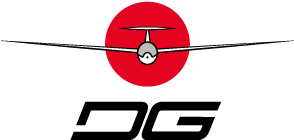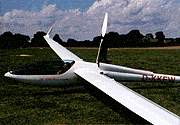
This remark came from a competitor, and I honestly admit that he is actually right. I use the engine as little as possible. Naturally you can fly with lower HP engines, especially when gliding!
On the other hand, there are situations, when power really does make a difference. At very high altitudes, while crossing a pass or by higher elevated and shorter runways. I have other personal reasons why more horsepower is important. It enables me to turnoff the unliked but necessary noise maker a little bit sooner, so that I can enjoy the peacefulness of gliding. If an engine with higher horsepower is available then why not use it?
During the design of a new glider with retractable engine the designer naturally will attempt to use the already developed fuselage and attempt to install an engine into it.
That this does not always work is evident when you look at the DG-600M from the earlier company Glaser-Dirks. With a 25 horsepower engine the glider was definitely under-powered, however there was just not enough room in the skinny fuselage for a more powerful engine.
That is why we were, some say “Thankfully “, forced into constructing a new fuselage for the DG-800. This brought along many advantages that other gliders of the same kind using a small glider fuselage do not have.
- The deciding factor is not to install a stronger engine in the glider. One must bring the power in the air as well. In other words the entire package has to be optimized.
This is where the laws of Physics come into play. The larger slower rotating propeller works better than a smaller faster rotating one.
That this is true is evident when you look at electric planes, where every single horsepower is vital. All have larger but slower rotating propellers.
The larger the propeller the more it works outside the drag field produced by the engine mounting or the radiator, etc.
The DG-808C has a very large propeller, which thanks to a fan belt ratio of 3:1 runs at only 2100 RPM. - This leads to a very quiet, low frequency running noise, which is a big difference compared with the earlier produced DG-400. Another reason why an engine with improved efficiency is quieter is while flying over the first houses after the start the glider is already at a much higher altitude.
The only problem with the solution is the space requirements, but because we had to develop a new fuselage we were able to take this problem into account. - Because we had to build a new fuselage for the engine, we were able to take into account the extra weight of the engine, during construction. That is why we built our fuselage from Carbon/Aramid. This decreases the overall weight of it, but increases the fuselages strength and safety. We also increased the length of the fuselage boom. The result of which is a completely new glider, especially designed as a motorglider!
You would then require assistance during the start phase. - Furthermore we were able to change the position of the main wheel so that the tail wheel takes more of the weight. If we would not have done this the plane would nose dive during starts and landings on uneven ground. There would also not be enough weight on the tail wheel during the start or landing phases, which is required in order to steer the plane.
- Given the opportunity, one would of course cut out a larger opening in the fuselage for a larger steerable tail wheel. A larger wheel is not only stronger than a smaller one, it also offers more comfort during starts and landings on uneven surfaces.
- The last two points are of course combined. Without a large tail wheel one puts more pressure on the main wheel, and less on the tail wheel. The draw-back to this is, that during the start when you give full power the plane will nose dive!!!
- Based on test results from Solo, the exhaust pipe that we specially developed for the engine results in a gain of 2 to 3 horsepower, compared to the other two manufacturers that use the same engine. The exhaust pipe is for a two stroke engines performance very important.
- During the three years in which we use Solo engines, two other manufacturers have also began installing Solo engines as well.
That is why we can proudly stake claim when we say:
“The DG-808C is the most powerful plane of its Class.
Fully optimized for the uses it was constructed for”
 |
 |
| Oscillation Measurement of the DG-808C to minimize Vibrations | |

